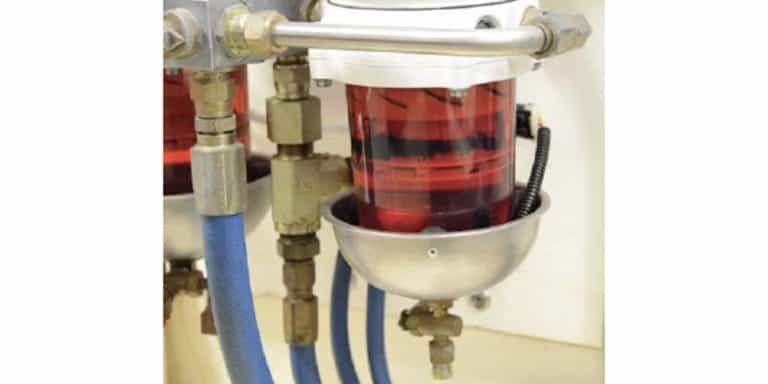Ask Andrew: Mast up or Mast Down

Oct 14, 2021
taking the mast down
So many decisions to make when planning for haul-out. When/how to winterize? What type of antifreeze to use? Shrink-wrap or cover?
Another topic of concerns is mast-up or mast down for the winter. There are major pros and cons and polarizing opinions – and this edition will seek to explore your options.
First – When/why should masts be removed? There are a few reasons when it’s a must:
1) If the boat is being transported by land, or if the boat is being transported by water through areas where the mast height can’t be accommodated (under bridges or through locks that have height restrictions)
2) If the boat is being hauled out of the water, and the travel lift, crane or storage yard requires the mast to be down (generally for safety reasons).
3) If the mast and rigging are better to be sheltered for the winter, than exposed to the elements. Often, this is the case with wooden masts, or with rigging that wears quickly
The biggest case when considering taking the mast down is in relation to potential damage. Consider how a boat moves, flexes and absorbs pressure when it’s in the water through the warmer months. The hull and surrounding water absorbs the temperature changes, the rolling and jarring motions and the shocks to the rig during heavy weather and heeling motions. When the same hull is out of the water, it sits firmly in a cradle, and is unable to absorb and flex with any movement in the rigging.
The opposing argument says: how bad can it be? There is a strong argument that modern hull design, and modern hull and mast materials allow for these forces to be absorbed without significant damage or risk.
 one of many areas needed for inspection: damaged/frayed wire leading to rigging failure
one of many areas needed for inspection: damaged/frayed wire leading to rigging failure
But let’s be realistic: How many of us wake up on a cold January morning worrying about the stresses that our masts are placing on the hull, and if leaving the mast up was a poor decision. I would guess that the number of hands raised in the room would be quite small. How many of us would raise our hands to save the time and effort involved in taking the mast down, coiling the sheets, labelling and stowing the clevis pins, securing the turnbuckles and then doing it all again in the spring?
So the main arguments boil down to: stresses vs stress. The stresses placed on the stored boat with the mast up, compared to the stress of doing the work to remove and step the mast.
There are a few secondary considerations to help sway your decision:
1) Is it possible to leave your mast up? Some cranes and travelifts can’t accommodate a mast up – so check with your marina or club before making a final decision
2) Potential for inspection – with the mast up, it’s tough to get a good look at pins, shackles and other areas of corrosion or weather damage. Another often overlooked area for inspection is the mast step and/or compression post – which is impossible to investigate with the mast still up.
3) Completing needed repairs or upgrades – it’s a lot more difficult to change a light bulb, replace wiring or replace a pin with the mast up.
 4) Storage damage – sometimes pulling the mast down can do more harm than good: potential for damage as the mast is taken off and stepped, as well as the risk to damage while it sits in a mast rack or on the ground is higher than if the mast were left up.
4) Storage damage – sometimes pulling the mast down can do more harm than good: potential for damage as the mast is taken off and stepped, as well as the risk to damage while it sits in a mast rack or on the ground is higher than if the mast were left up.
5) Cost of covering or wrapping. A custom cover can accommodate masts, stays and rigging, though its not as water-tight as a cover fitted with the mast down. The cost of shrink-wrapping a boat with a mast up can increase significantly with the added labour time required to cut and fit the shrink-wrap properly.
At the end of the day – each boater needs to decide for themselves each year whether to take the mast down or leave it up. I like, and recommend a hybrid model: assuming that the mast can stay up, every second or third year it should be removed for a complete inspection (while including rigging inspections in the water, as needed).
 Andrew McDonald is the owner of Lakeside Marine Services – a boat repair/maintenance firm based in Toronto. Andrew has worked in the marine industry for 12 years and is a graduate of the Georgian College ‘Mechanical Techniques – Marine Engine Mechanic’ program.
Andrew McDonald is the owner of Lakeside Marine Services – a boat repair/maintenance firm based in Toronto. Andrew has worked in the marine industry for 12 years and is a graduate of the Georgian College ‘Mechanical Techniques – Marine Engine Mechanic’ program.
Questions or comments for Andrew? Email him directly via: askandrew@lakesidemarineservices.ca





























